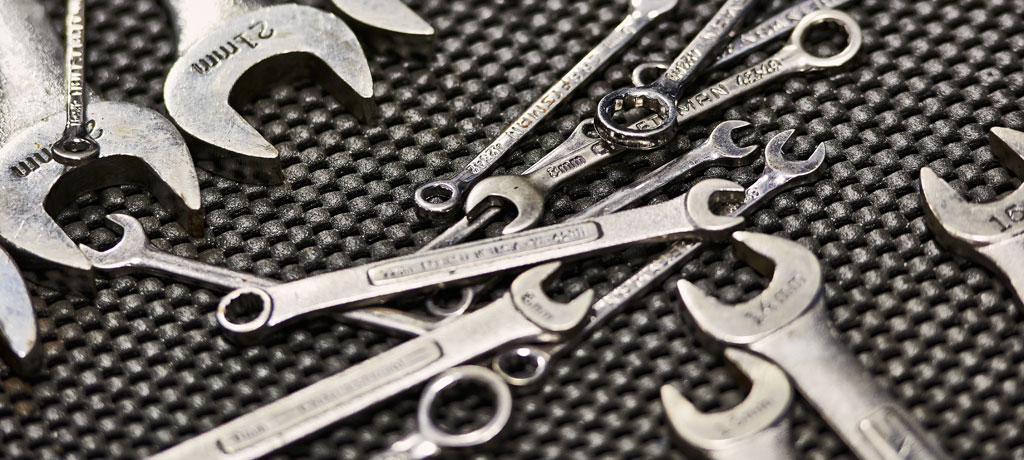Wheel Bearing Warning Signs
You already know that your car cannot function safely or properly without good, sturdy wheels. What you may not know is that the wheel is far from a simple component. Actually, there is a lot of complexity that goes into the design of a wheel, and several components that must all be integrated together.
A good example of this is the wheel bearing. Wheel bearings are critical for your wheels to work together—specifically, for the hub, tire, and assemblies to work harmoniously. They are also prone to abuse, which is why it’s essential to know the warning signs. But before we go deeper into bad bearings, symptoms, impact, and costs, it’s equally important to understand what it is.
What is a Wheel Bearing?
A wheel bearing is a set of steel balls held together in a metal ring, called a race. At the center of your wheels, there is a hollow piece of metal, called a hub. The wheel bearings fit tightly inside this hub, and ride on a metal axle shaft, helping reduce friction when the wheel spins.
These are different from the engine bearings, as there is no constant source of lubrication for the wheel bearings, which means they need to be tight enough to keep away water and road dust. They also support the entire vehicle weight while driving, which is why they suffer a lot of abuse from rough roads, potholes, as well as lateral forces when turning.
As with most automotive components, the wheel bearing can eventually give way to wear and tear, and may even need to be replaced. How will you know when it’s time for a wheel bearing replacement or at least have your vehicle looked at by an automotive professional? Pay attention to some of the key warning signs of a bad wheel bearing.
How to Tell When Wheel Bearings Go Bad
Ball bearings are the most common type of wheel bearings used today (along with roller bearings—though the latter don’t have the versatility of the ball ones). Other types include tapered roller bearings, mainly used for trucks, and precision ball bearings, designed for intense radial loads. Regardless of the type your vehicle has, the warning signs are the same, specifically a bad wheel bearing sound.
Here are just a few things to keep in mind:
- First and foremost, listen! The most common and most easily identifiable symptom of a bad wheel bearing is an audible one. If you notice a grinding or grating noise coming from your wheel or tire, take note that this is very likely caused by a bad wheel bearing—especially if the noise gets louder as the vehicle accelerates.
- Another revealing sign of bad wheel bearings: A car that feels loose as you drive it. Looseness can be difficult to convey, but basically, it refers to steering your car and finding that it seems less responsive or less precise than usual. Loose steering is not always due to a problem with the wheel bearings, but it very often can be. Sometimes the wheel bearings can become worn down, which causes them to loosen within your wheel assembly.
- A related phenomenon is pulling. When you drive, does the car go where you tell it to or does it seem like it has a mind of its own, veering in a particular direction? Again, this is not always because of a problem with the wheel bearing, but that can certainly be a culprit.
- Finally, pay attention to your tires. Rotating your tires regularly can help prevent wear—but if you find that you have extremely uneven wear, you may want to have the wheel bearings looked at.
How to Distinguish Bad Wheel Bearing Noise
Humming Noises
There are many sounds coming from a vehicle that are reason for concern, so it’s important to differentiate between them in order to avoid misdiagnosis. Noise can be misleading: a humming noise while driving can be caused by several different issues, starting with your tires, but it can also be the wheel bearing or CV joint.
Squealing & Growling
The classic sounds of a bad wheel bearing are cyclic chirping, squealing and/or growling noise. You can also tell that the sound is related to wheel bearings if it changes in proportion to vehicle speed. The sound can get worse with every turn, or it can disappear momentarily.
Rear Differential Noise vs Wheel Bearing Noise
Howling noise that solely occurs during deceleration is a pretty good indicator of loose pinion-bearing preload. If the howling happens under acceleration at different speeds, then it’s probably worn out gears. However, overly worn out bearings tend to make a howling noise as well, when they don’t support the gears correctly. They also tend to make a rumbling sound when turning.





